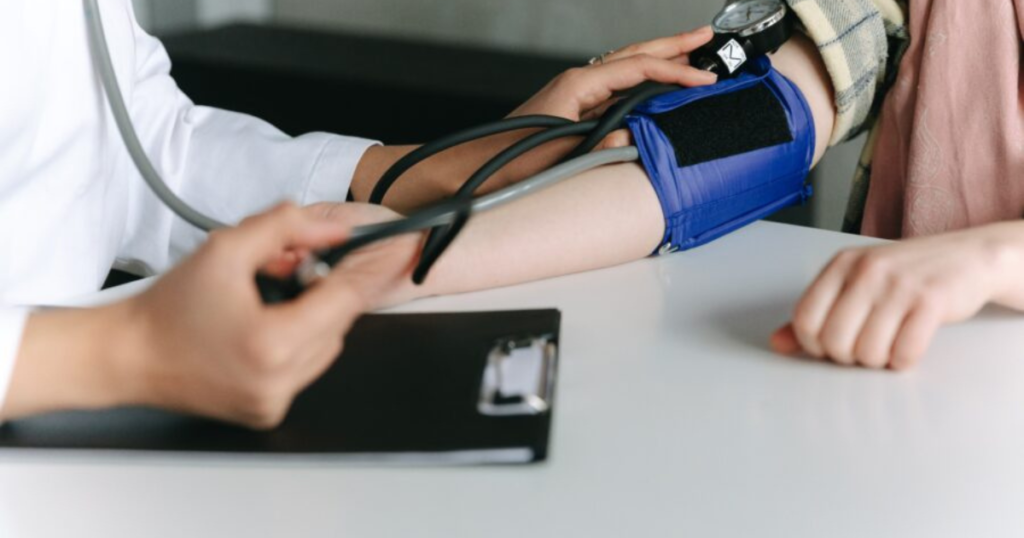
I vividly recall a moment when hypertension (high blood pressure) unexpectedly entered my world. It happened during a routine hospital checkup amid the COVID-19 pandemic. As I climbed three flights of stairs so I wouldn’t take the elevator to reach the appointment, the physical effort took its toll, causing my blood pressure to spike. I requested a brief respite from the nurse to allow my blood pressure to normalize. During those 10-15 minutes, I engaged in calming breathing exercises and attempted to relax using face mascara. Astonishingly, when the nurse returned to measure my blood pressure again, it had decreased to the normal range.
This encounter intrigued the nurse, prompting her to inquire about my methods for such a rapid reduction. This experience inspired me to research hypertension and the intriguing connection between thyroid conditions and this often silent yet significant health concern. In this article, I will explore the multifaceted relationship between the thyroid gland and hypertension, shedding light on how understanding this connection can significantly impact our well-being and overall health management.
Understanding Hypertension
Hypertension, often called high blood pressure, impacts millions of people globally. It is a silent killer, often lurking without apparent symptoms until it’s too late. While various factors contribute to hypertension, including genetics, lifestyle, and diet, the role of the thyroid gland in regulating blood pressure is often overlooked.
Blood pressure is the force created by the blood against the walls of your arteries as your heart propels it throughout your body. It is measured using two values: systolic (pressure when your heart beats) and diastolic (pressure when your heart rests between beats).
Typical blood pressure readings are usually below 120/80 mm Hg (millimeters of mercury). Hypertension arises when blood pressure consistently surpasses 130/80 mm Hg. Sustained elevated blood pressure can harm your arteries, heart, and other essential organs, resulting in significant health issues.
Causes of Hypertension

Hypertension may arise from :
- Genetic predisposition
- Obesity
- Insufficient physical activity
- Excessive salt consumption
- Smoking
- Heavy alcohol use
- Stress
- Chronic ailments like kidney disease, adrenal gland disorders, sleep apnea, diabetes
- Certain medications (birth control pills, cold remedies, decongestants, and NSAIDs)
- Hormonal conditions (hyperaldosteronism and hyperparathyroidism)
- Pregnancy
- Aging
Symptoms of Hypertension
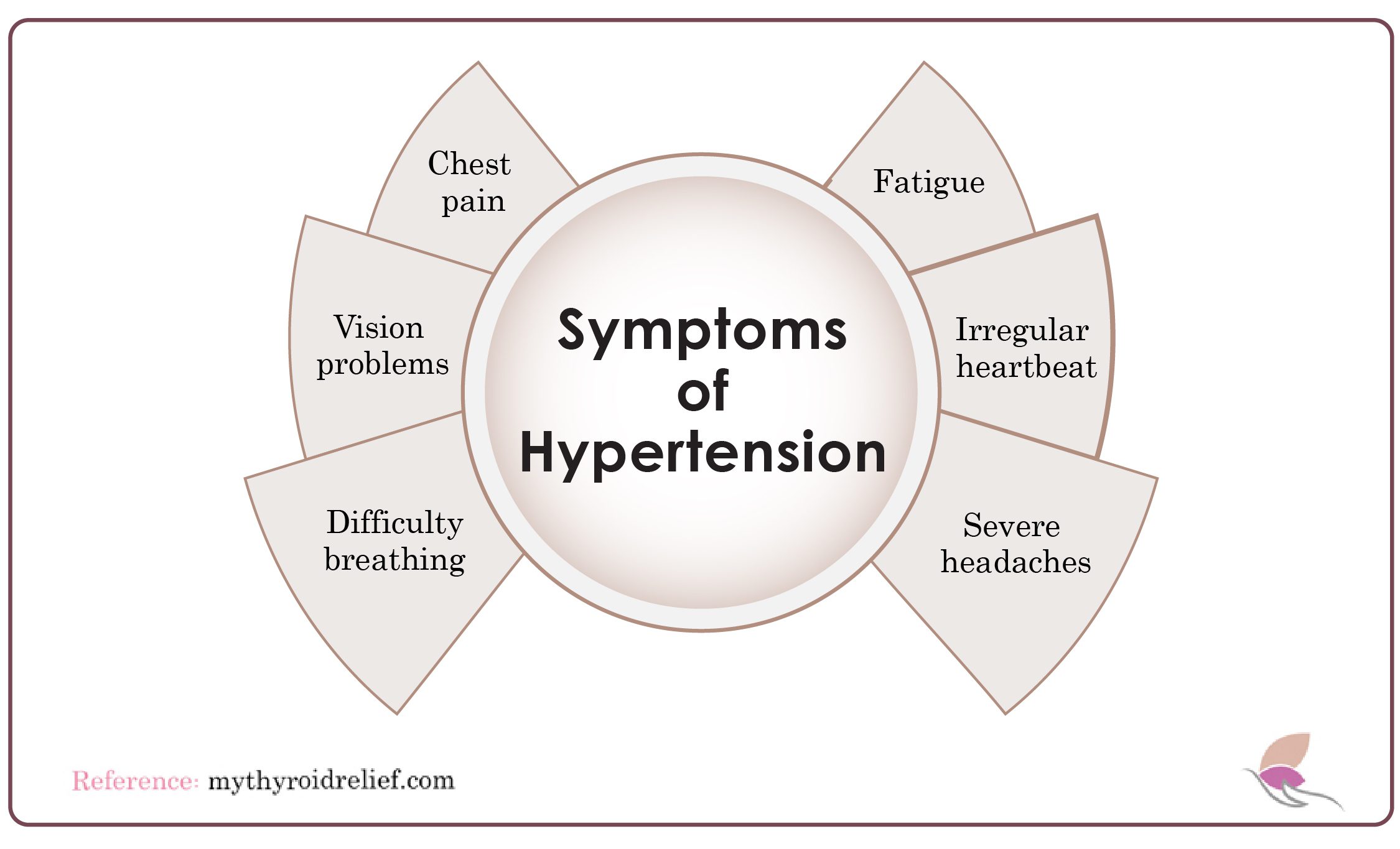
Hypertension is often called the ‘hidden danger’ because it usually doesn’t present noticeable symptoms until it reaches a severe stage. In advanced cases, individuals may experience:
- Severe headaches
- Fatigue
- Vision problems
- Chest pain
- Difficulty breathing
- Irregular heartbeat
The Thyroid’s Role in Blood Pressure Regulation

The thyroid gland, a butterfly-shaped organ at the base of your neck, controls metabolism and overall well-being. Thyroid hormones, specifically thyroxine (T4) and triiodothyronine (T3), affect virtually every cell in the body, including those in the cardiovascular system. Here’s how the thyroid and blood pressure are interconnected:
- Hormone Production: The thyroid gland produces T4 and T3 hormones, influencing heart rate and the strength of heart contractions. An overactive thyroid (hyperthyroidism) can accelerate heart rate, potentially leading to hypertension.
- Arterial Tone: Thyroid hormones affect the tone and elasticity of your arteries. Too much thyroid hormone can cause blood vessels to constrict, raising blood pressure.
- Salt Regulation: The thyroid gland helps regulate sodium levels in the body. A sodium imbalance can impact blood volume, which in turn affects blood pressure.
- Cholesterol Levels: Thyroid hormones influence cholesterol metabolism. Abnormal cholesterol levels can contribute to atherosclerosis, which narrows and stiffens arteries, leading to hypertension.
The Thyroid-Hypertension Connection
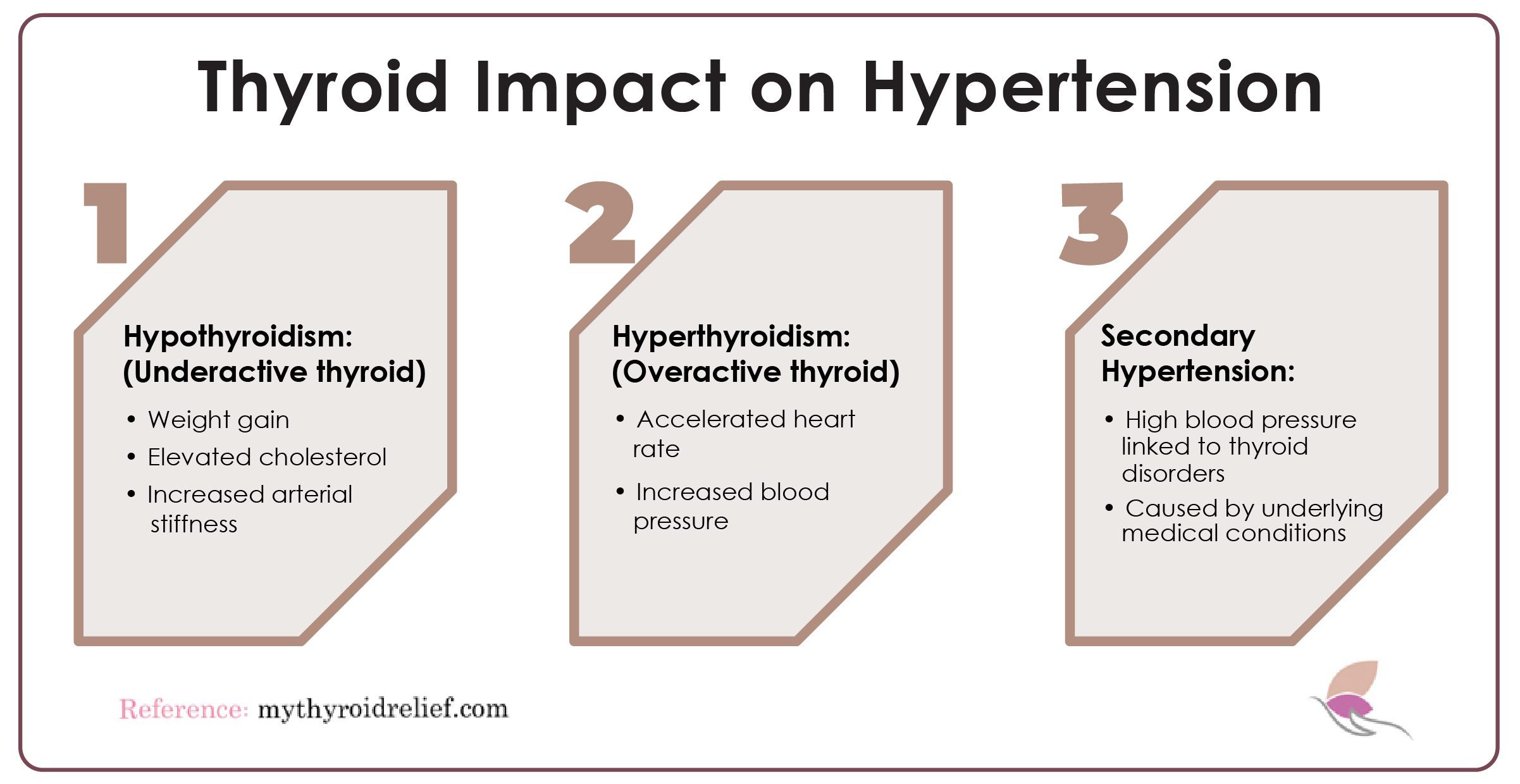
Now that we understand the thyroid’s role in blood pressure regulation, let’s explore the thyroid-hypertension connection more deeply:
- Hypothyroidism and Hypertension: Hypothyroidism, characterized by an underactive thyroid gland, can lead to weight gain, elevated cholesterol levels, and increased arterial stiffness, all risk factors for hypertension.
- Hyperthyroidism and Hypertension: Hyperthyroidism, or an overactive thyroid gland, can accelerate heart rate and raise blood pressure.
- Secondary Hypertension: In some cases, thyroid disorders can cause secondary hypertension, which is high blood pressure directly linked to an underlying medical condition.
If you suspect that your thyroid may be contributing to hypertension, it’s crucial to seek medical attention promptly. Your healthcare provider can perform thyroid function tests to assess your thyroid hormone levels. Depending on the diagnosis, treatment options may include:
- Thyroid hormone replacement therapy for hypothyroidism
- Medications to control heart rate and blood pressure in hyperthyroidism
- Lifestyle modifications, including dietary changes and stress management
Incorporating Lifestyle Changes To Lower Hypertension
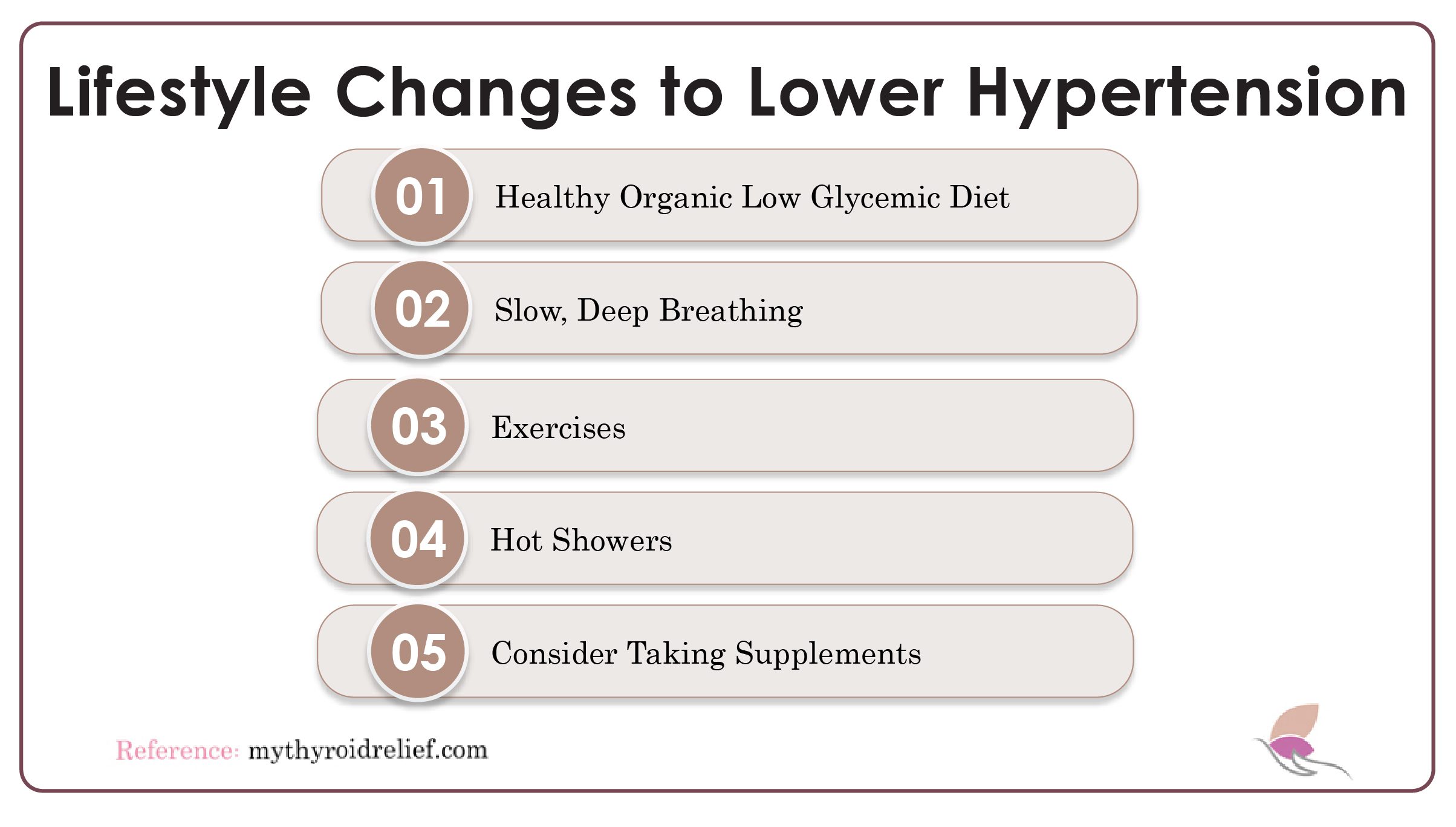
Besides medical treatment, lifestyle changes play a crucial role in managing hypertension and its connection to thyroid health:
1. Healthy Organic Diet
Making dietary changes is a foundational step in managing hypertension and improving overall heart health. A healthy organic diet provides essential nutrients, supports a balanced metabolism, and helps maintain healthy blood pressure levels.
Focus on a diet rich in whole, nutrient-dense foods:
A. Focus on Whole Foods
- Include low-glycemic fruits such as berries, apples, and cherries. These fruits provide antioxidants and fiber, helping to stabilize blood sugar and reduce inflammation.
- Incorporate vegetables like leafy greens, broccoli, and bell peppers. These are rich in potassium and magnesium, minerals essential for blood pressure regulation.
- Opt for whole grains such as quinoa, brown rice, and oats, which are high in fiber and help in maintaining a steady blood pressure. Include Lean Organic and Grass-Fed Proteins
- Choose lean proteins like chicken, turkey, and fish, preferably organic or wild-caught. These options are lower in saturated fats, reducing the strain on the heart.
- Integrate plant-based proteins such as legumes, tofu, and tempeh. These provide heart-friendly nutrients without added cholesterol.
B. Minimize Processed Foods
- Steer clear of processed foods with added sugars, trans fats, artificial preservatives, and dyes. These additives can elevate blood pressure and increase inflammation in the body.
- Prepare meals at home with fresh ingredients to ensure you control the quality and composition of your meals.
C. Consider Taking Supplements
- Consult a healthcare provider about supplements that support heart health. Common recommendations include:
- Magnesium helps relax blood vessels, aiding in the reduction of blood pressure.
- Potassium balances sodium levels in the body, promoting healthier blood pressure.
- Omega-3 Fatty Acids, found in fish oil or algae-based supplements, reduce inflammation and improve cardiovascular health.
- Explore natural herbs like garlic, which has been shown to lower blood pressure, and turmeric, which reduces inflammation and supports vascular health.
2. Slow, Deep Breathing
Portable electronic devices, such as those promoting slow, deep breathing exercises, have shown promise in reducing stress and lowering blood pressure. These devices guide users in achieving slow, controlled breathing patterns, which can calm the nervous system and help lower blood pressure. Also, you can follow the breathing exercise you mentioned, which involves a specific pattern of inhalation and exhalation. Here’s a breakdown of the process:
- Inhale: Start by taking a slow, deep breath through your nose. As you inhale, count silently to yourself for 2 seconds. This means you’re filling your lungs gradually and steadily with air during this brief 2-second inhalation.
- Hold: After you’ve completed the 2-second inhalation, briefly hold your breath for a moment. This pause is typically very short, allowing the fresh oxygen you inhaled to transfer into your bloodstream.
- Exhale: Now, exhale slowly and steadily through your mouth for 6 seconds. As you exhale, you release the breath in a controlled manner, taking 6 seconds to empty your lungs.
This breathing exercise encourages slow, deep, and controlled breaths. It can help reduce stress and promote relaxation, which, in turn, can contribute to lowering blood pressure. The extended exhalation phase is often associated with calming the nervous system and reducing tension. It’s important to perform this exercise in a comfortable and quiet environment, focusing on your breath and the counting rhythm. Over time, practicing this breathing technique regularly can be a valuable tool for managing hypertension.
3. Exercise
Regular physical activity is a cornerstone of hypertension management. Engaging in activities like walking, Pilates, or other forms of exercise can help reduce blood pressure by improving cardiovascular health, reducing stress, and promoting weight loss. Exercise can be an efficient method to manage hypertension (high blood pressure). The following are categories of exercises typically regarded as appropriate for individuals dealing with hypertension:
A. Cardiovascular Workouts
These exercises elevate your heart rate, respiratory function, and cardiovascular fitness. Examples you can follow will be brisk walking, jogging, cycling, swimming, and dancing. Try to exercise 150 minutes of moderate-intensity aerobic exercise per week or 75 minutes of Strength Training. Including strength training exercises in your fitness regimen is crucial for preserving and enhancing muscle mass. Activities such as weightlifting or resistance band workouts effectively achieve this goal. These exercises increase muscle strength and contribute to overall physical fitness.
B. Flexibility and Balance Exercises
Engaging in activities that enhance flexibility and balance, such as yoga or Pilates, can benefit individuals with hypertension. These exercises improve body control and coordination, helping to decrease the risk of falls and injuries.
C. Strength Training
Building muscle can help support overall health, including blood pressure management. Strength training exercises involve using weights, resistance bands, or your body weight for resistance. Incorporate resistance training routines that target major muscle groups at least two days per week.
Specific Exercise Recommendations
- Pilates: This focuses on core strength, flexibility, and body awareness. It can help improve posture, reduce stress, and promote overall well-being. Some studies suggest that pilates have a positive impact on blood pressure control.
- Tai Chi: This mind-body practice involves slow movements and deep breathing. Tai Chi is known for its relaxation benefits and may help lower blood pressure.
- Stretching: Flexibility exercises, like stretching, can improve your range of motion and help reduce tension. Incorporate stretching into your routine to complement aerobic and strength exercises.
4. Hot Showers
Hot showers are often overlooked as a potential relaxation and blood pressure management method. When you step into a warm shower, the soothing sensation of the water cascading over your body can calm your mind and muscles. This relaxation response extends beyond the immediate moment; it can persist even after you shower. The warm water causes blood vessels to dilate, which leads to improved circulation and, in some cases, lower blood pressure. Additionally, the relaxation induced by a hot shower may help reduce stress and tension, which can regulate blood pressure.
Supplements for Managing Hypertension
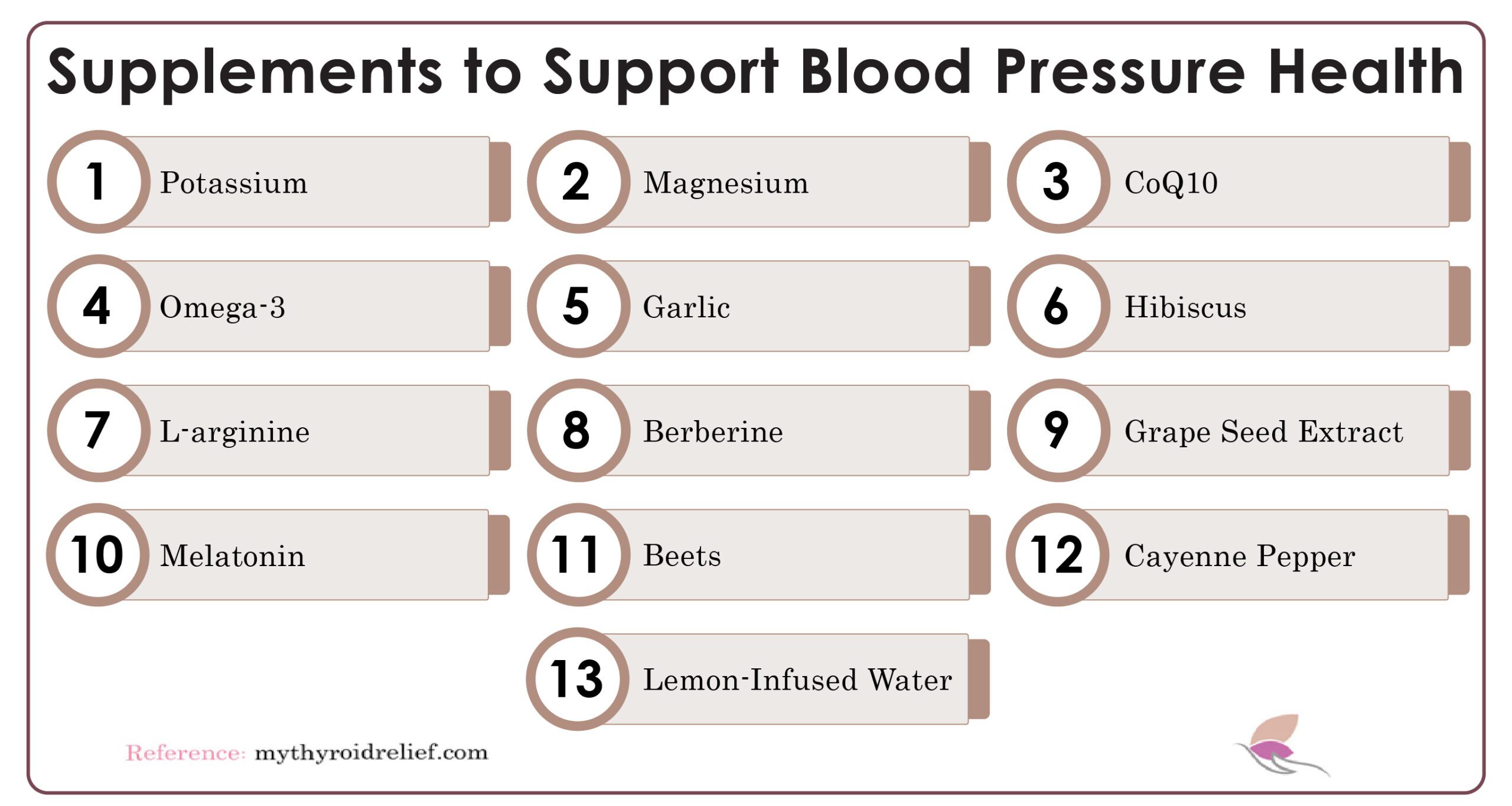
Supplements may complement other lifestyle changes and medications for low or high levels of thyroid hormones to manage hypertension. Still, they should be used under the guidance of a healthcare professional. They can guide you on appropriate dosages and monitor your progress. It’s essential to remember that supplements are not a replacement for prescribed medications or lifestyle changes recommended by a healthcare provider. Also, supplements can interact with medications and may not be suitable for everyone.
These supplements include:
1. Potassium: Adequate potassium intake can help balance sodium levels in the body, potentially lowering blood pressure. Potassium-rich foods include avocados, spinach, lentils, and sweet potatoes. Potassium supplements may be recommended in some cases.
2. Magnesium: Magnesium plays a role in blood vessel relaxation, and magnesium supplements may help lower blood pressure in some individuals. Good dietary sources of magnesium include nuts, seeds, leafy greens, and whole grains.
3. Calcium: Adequate calcium intake is important for overall health and may help regulate blood pressure. Calcium supplements are sometimes recommended, especially for individuals with low dietary calcium intake.
4. Coenzyme Q10 (CoQ10): CoQ10 is an antioxidant that may help improve blood vessel function and lower blood pressure.
5. Omega-3 Fatty Acids: Omega-3 supplements may have a modest blood pressure-lowering effect. They are also good for heart health.
6. Garlic: Garlic supplements have been studied for their potential to lower blood pressure. They may have a mild, positive effect on some people.
7. Hibiscus: In some studies, hibiscus tea or supplements made from hibiscus extract have shown promise in lowering blood pressure.
8. L-arginine: L-arginine is an amino acid that can increase the body’s production of nitric oxide, which relaxes blood vessels.
9. Berberine (Regular and Dihydroberberine): Berberine, including its modified form dihydroberberine (which offers better absorption and effectiveness), is a compound found in certain plants like Berberis species. Both forms of berberine are known for their potential to manage blood sugar levels and support cardiovascular health. They have been shown to help lower blood pressure, improve glucose metabolism, and enhance lipid profiles.
10. Grape Seed Extract: Grape seed extract, derived from grape seeds, is rich in antioxidants and may improve blood flow, reduce inflammation, and support collagen production, benefiting heart health.
Other Supplements include
11. Melatonin: In some cases, melatonin supplements may improve sleep, indirectly reducing the blood pressure
12. Beets: Beets are a nutritional powerhouse with their vibrant red hue. They are rich in nitrates, compounds known for their vasodilatory properties, which means they can relax and widen blood vessels. This relaxation of blood vessels may lead to improved blood flow and reduced blood pressure. The body converts nitrates into nitric oxide, a crucial molecule regulating blood pressure. Beet supplements, often available in the form of capsules or powdered extracts, offer a convenient way to incorporate the benefits of beets into your daily routine.
13. Cayenne Pepper and Capsaicin: Cayenne pepper, scientifically known as Capsicum annuum, contains capsaicin, a bioactive compound responsible for its spicy kick. Capsaicin has been researched for its potential benefits in supporting cardiovascular health by expanding blood vessels and enhancing blood circulation. To incorporate cayenne pepper into your daily routine, start with a small amount, such as 1/4 teaspoon, and gradually increase it up to 1 teaspoon per day. Consult a holistic healthcare provider specializing in natural remedies for the correct dose for your case to ensure safe and effective utilization.
14. Lemon-Infused Water: Consuming lemon-infused water may help reduce hypertension. The citric acid in lemon has the potential to relax blood vessels, facilitate improved blood flow, and contribute to lower blood pressure levels.
Conclusion
Understanding the link between the thyroid and hypertension is crucial for effective health management. Whether managing an overactive or underactive thyroid, addressing thyroid-related issues can significantly impact blood pressure control. Incorporating breathing exercises, physical activity, a balanced diet, and appropriate supplements can further manage hypertension. Always consult with a healthcare provider for personalized advice and treatment.
References
https://medlineplus.gov/genetics/condition/hypertension/
https://rdcu.be/dMGc6
https://www.nejm.org/doi/full/10.1056/NEJM200102153440707
https://www.cochrane.org/CD010037/HTN_extra-calcium-prevent-high-blood-pressure
https://ncbi.nlm.nih.gov/pmc/articles/PMC3366688/
https://www.ncbi.nlm.nih.gov/pmc/articles/PMC8746601/